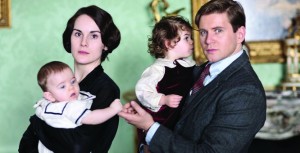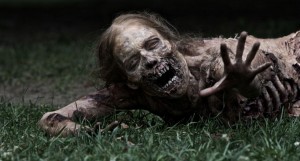PBS’ Downton Abbey was only ever an elegant soap opera dressed in period costume, but, following the recent closure of the fourth season, it appears as if the show has finally abandoned its pretensions and fully embraced itself within the genre.
 It comes as a little bit of a disappointment. The first season, set between 1912 and 1914, appeared to be aspiring to something greater. Viewers were introduced a set of intriguing characters (upstairs and downstairs) and plot themes centered around class division, the general uneasiness surrounding the time period just preceding WWI, and cultural changes taking place at the turn of the century. The efforts of the first season were well-rewarded with a strong viewership and countless awards for both its writing and acting. Viewers hoped that the following seasons would be a little like the AMC show Mad Men in maintaining its historical accuracy along with strong storylines and character arcs.
It comes as a little bit of a disappointment. The first season, set between 1912 and 1914, appeared to be aspiring to something greater. Viewers were introduced a set of intriguing characters (upstairs and downstairs) and plot themes centered around class division, the general uneasiness surrounding the time period just preceding WWI, and cultural changes taking place at the turn of the century. The efforts of the first season were well-rewarded with a strong viewership and countless awards for both its writing and acting. Viewers hoped that the following seasons would be a little like the AMC show Mad Men in maintaining its historical accuracy along with strong storylines and character arcs.
But whatever its initial aspirations, subsequent seasons of Downton just could not reach the high bar set by the first season, with unbelievable plotlines and characters becoming more and more commonplace. Regardless, fans still clung to the show. Whatever the series’ shortcomings, the world of Downton is irresistibly charming. (Maybe it’s the clothes.)
The just-ended fourth season, though, takes the cake for implausible plot threads and shallow characterization.
To be fair, this season was going to be rocky from the beginning. For the past three seasons, the backbone of the story has been centered on the relationship between Lady Mary Crawley (daughter of the Earl of Grantham who is current owner of Downton) and Matthew Crawley, her very distant cousin and heir to Downton. However, at the very end of season three Matthew was killed in a car accident (an actor’s contract is as good as a Grim Reaper), leaving Mary, not to mention the show, in a bit of a lurch.
Writer and creator Julian Fellowes attempted to make up for Matthew’s noticeable absence by introducing three drab and hardly distinguishable suitors, with little success. (Even Mary herself seemed bored with them.) Outside of this tedious storyline, there were multiple instances during the season where Fellowes appeared to be taking plots from a basic soap opera’s playbook: an unexpected pregnancy, a mysterious disappearance, a juvenile love triangle downstairs, and a case involving blackmail.
Suffice it to say, the only storyline that seemed to matter this season was the fallout resulting from the rape of Mary’s maid Anna by a visiting valet. Regular viewers of the show were shocked at the initial event, which was no doubt Fellowes’ intent as Anna has remained a fan favorite since season one. (Equally appalling was Tom Branson’s rape that occurred in the same episode, but this [regretfully] did not receive due attention from Downton’s viewership.)
However, the handling of this storyline was mismanaged from the get-go. Rather than taking the opportunity to explore Anna’s perspective and personal development following what happened to her character, the plot instead centered on the potential actions of her husband who, we are lead to believe, would be so infuriated over what happened to his wife that he would inevitably murder the rapist (and thence be sent to prison, etc.) So Anna spends most of the season silent about what happened to her, while viewers are meant to be more concerned about her husband and whether he will attempt to seek his own closure.
Besides implausible storylines, even some of the strongest characters of Downton were horribly reduced. For instance, Thomas, the evil butler, had been outed last season (increasing viewer’s sympathies for this otherwise dastardly character) but this storyline was completely dropped, maybe even forgotten. Meanwhile, Tom Branson – the former fiery Irish rebel – was forced to re-tread old “adjustment to aristocracy” plotlines.
And then other characters were treated merely as backdrops. Cora, for instance, did nothing of significance this season except, as quipped by the Washington Post, tilt her head and give “a legal-in-Colorado smile” during any conversation. Even the Dowager Countess (played by the excellent Maggie Smith) was reduced to one-liners at the dinner table and not played to her full force. (Given Smith’s acting chops, this was a real pity.)
Still, there were glimpses of the old Downton in season four that sparkled through the (very) muddy plot. Part of what made Downton so rewarding in earlier seasons was its constant celebrations of loyalty, love, forgiveness, and hard work. Those themes still persisted in season four. One of the most poignant scenes of the season took place in the nursery where Lady Mary, Isobel Crawley, and Tom Branson (all grieving for the loss of a spouse or a son) reflected on their losses and experiences of love, commenting, “Aren’t we the lucky ones?” Additionally, the developing mother-daughter relationship between Mrs. Patmore and Daisy was also well done.
Overall, yes, season four was unremarkable. Yes, it appears that the series is near the end of its run. And yes, it is disappointing that, given the brilliance of its first season, Downton could have been great. But, given that it has clearly asserted itself as one, there’s no reason not to sit back in your armchair and enjoy the show exactly for what it is: a good ol’ fashioned soap opera with beautiful clothes.


